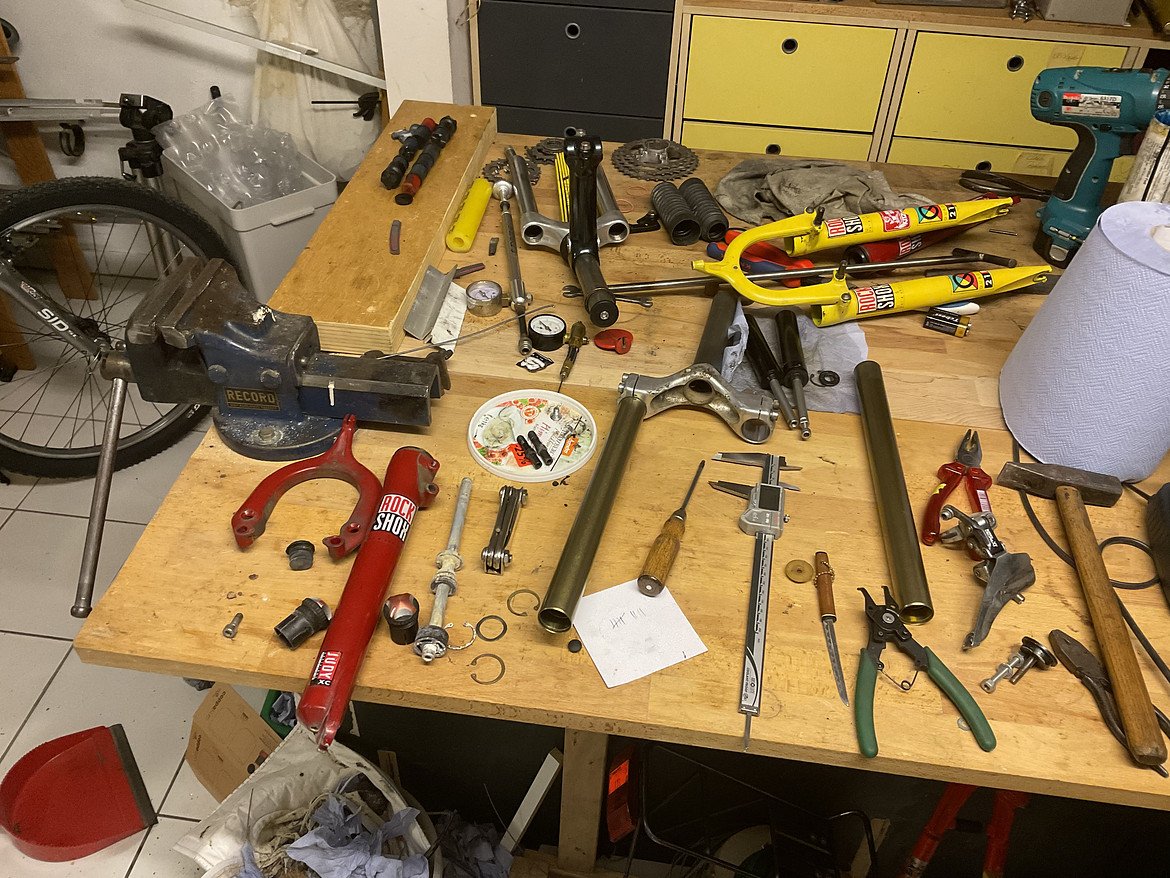Thias
Klein Fan
Hi there.
I'm currently in the process to resurrect and modify a '96 Judy.
One of its legs - the one with the neutral shaft - is badly corroded. But I have a spare one.
I also have a set of steel springs taken out of a '99 Hydracoil Judy and a second aluminium dampening cartridge.
The last time I did a spring conversion I had the feeling that the springs were "overpowering" the dampeners, even when using 10WT oil.
Which all made me think of using a dampening cartridge in both legs. But there is a problem.
The neutral shaft is there to limit the travel of the fork. With it missing, the springs would tug on the cartridges each time the fork fully extends. They would be pulled apart eventually.
As far as I know, the DH-Version of the Judy had a cartridge in each leg. Looking at pictures online, those cartridges seem different. Also I get the impression that one was for compression dampening. But I'm not sure. I didn't have one of these apart, yet. Does anybody know the difference between the XC and DH cartridges? And maybe even have pictures? How did the DH Judys limit the extension travel?
I'd also appreciate your thoughts about the coil swap and how to do it "right"
Picture, so the thread isn't that dry looking

I'm currently in the process to resurrect and modify a '96 Judy.
One of its legs - the one with the neutral shaft - is badly corroded. But I have a spare one.
I also have a set of steel springs taken out of a '99 Hydracoil Judy and a second aluminium dampening cartridge.
The last time I did a spring conversion I had the feeling that the springs were "overpowering" the dampeners, even when using 10WT oil.
Which all made me think of using a dampening cartridge in both legs. But there is a problem.
The neutral shaft is there to limit the travel of the fork. With it missing, the springs would tug on the cartridges each time the fork fully extends. They would be pulled apart eventually.
As far as I know, the DH-Version of the Judy had a cartridge in each leg. Looking at pictures online, those cartridges seem different. Also I get the impression that one was for compression dampening. But I'm not sure. I didn't have one of these apart, yet. Does anybody know the difference between the XC and DH cartridges? And maybe even have pictures? How did the DH Judys limit the extension travel?
I'd also appreciate your thoughts about the coil swap and how to do it "right"
Picture, so the thread isn't that dry looking

Last edited:
